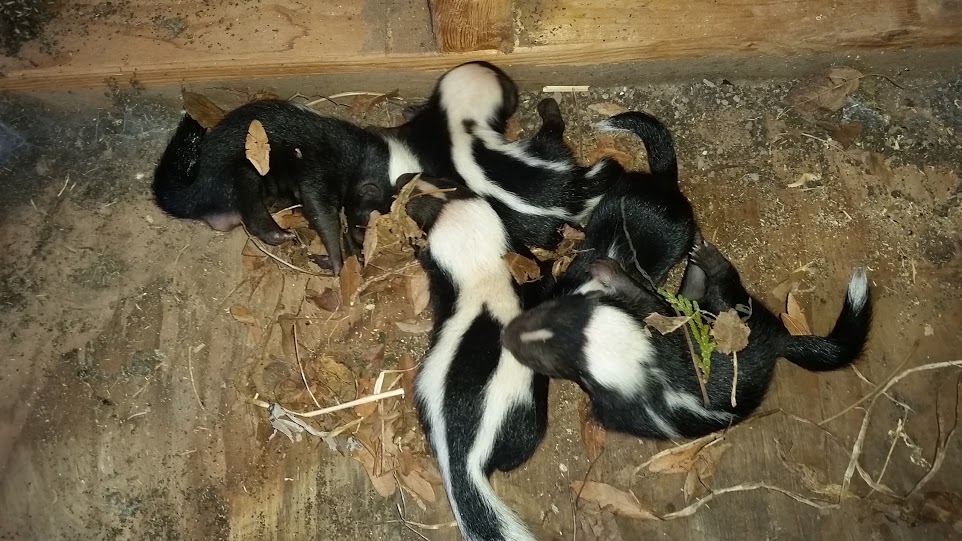While skunks provide a legitimate and necessary service to the ecosystem, controlling pesky insect populations, few people want to have a surfeit, or group of skunks, calling their property home. February through April, skunks are very active, mating and reproducing. You are most likely to spot a few promiscuous males than females, as the males go from den to den, spreading their seed. If you want to control the skunk population around your home, consider the following seven basic practices before looking into skunk removal in Madison.
1. Clean Up Your Landscaping
Skunks are foragers. The animal likes to find easy meals, which often come in the form of insects, berries, nuts, and other vegetation. If you have fruit producing trees or have bird and squirrel feeders on your property, make sure to rake and clean up your yard often. Skunks will welcome the yard scraps and continue coming back for more.
You also want to keep debris, like leaves and sticks, to a minimum. Skunks will use yard waste to help build and hide their dens.
2. Seal Your Garbage
Other familiar food sources for skunks and irritants for homeowners are garbage cans. While the animal is not trying to annoy its human neighbours, it senses that food is within the shiny trash bins, so it does whatever it can to dig in, including knocking the containers over and ripping into garbage bags. The best way to avoid this behaviour is to purchase garbage cans with secure, tight-fitting lids, making it impossible or improbable for a skunk to find its way in.
3. Feed Pets Indoors
Many homeowners choose to feed their pets outside. While it can make sense for dogs that spend most of their day outdoors, placing food on the ground is only taunting skunks and other wildlife. Instead of offering temptation, feed your dog and other pets inside, keeping pet food dishes secure behind a locked door. Also, if you have a doggy door, make sure to lock it at night — you don’t want any smelly intruders making their way inside.
4. Eliminate Potential Den Sites
Look at your property from a skunk’s perspective. The animal likes to find covered shelters with little potential for threats. Does your back deck or shed have an opening underneath? Do you keep lumber piled against your garage? Skunks do not always dig their shelters; many find comfort in ready-made spaces under human structures. Seal any potential den sites with boulders, fencing, or other materials, but do so after inspecting for a wildlife presence.
5. Install Property Lights
Skunks are mainly nocturnal and shy creatures. They do not want to attract attention, especially from humans and larger predators. An excellent tool to help limit the amount of skunk activity in your yard is a motion-activated light. Installing one or multiple lights around your property can deter wildlife, encouraging them to find food and shelter elsewhere.
6. Install Sprinklers
Like light, most skunks do not like water. Installing motion-activated sprinklers is a safe way of disturbing the peace without causing any real harm. The animal will avoid your yard because it does not want to get wet, meaning that it will find safer and dryer shelter elsewhere.
7. Call a Wildlife Professional
If you have seen multiple skunks near or on your property, do not attempt to remove them yourself. Instead, call a qualified wildlife removal expert, making sure that they adhere to humane removal practices. Calling in a qualified professional ensures both your and the animal’s safety. Remember, the skunk is not trying to intrude or damage your space; it is only acting to protect and feed itself.
If you believe you have seen a skunk on your property, contact Skedaddle Humane Wildlife Control for a property assessment. A skunk removal Madison specialist will inspect your land and let you know what your next steps should be.



